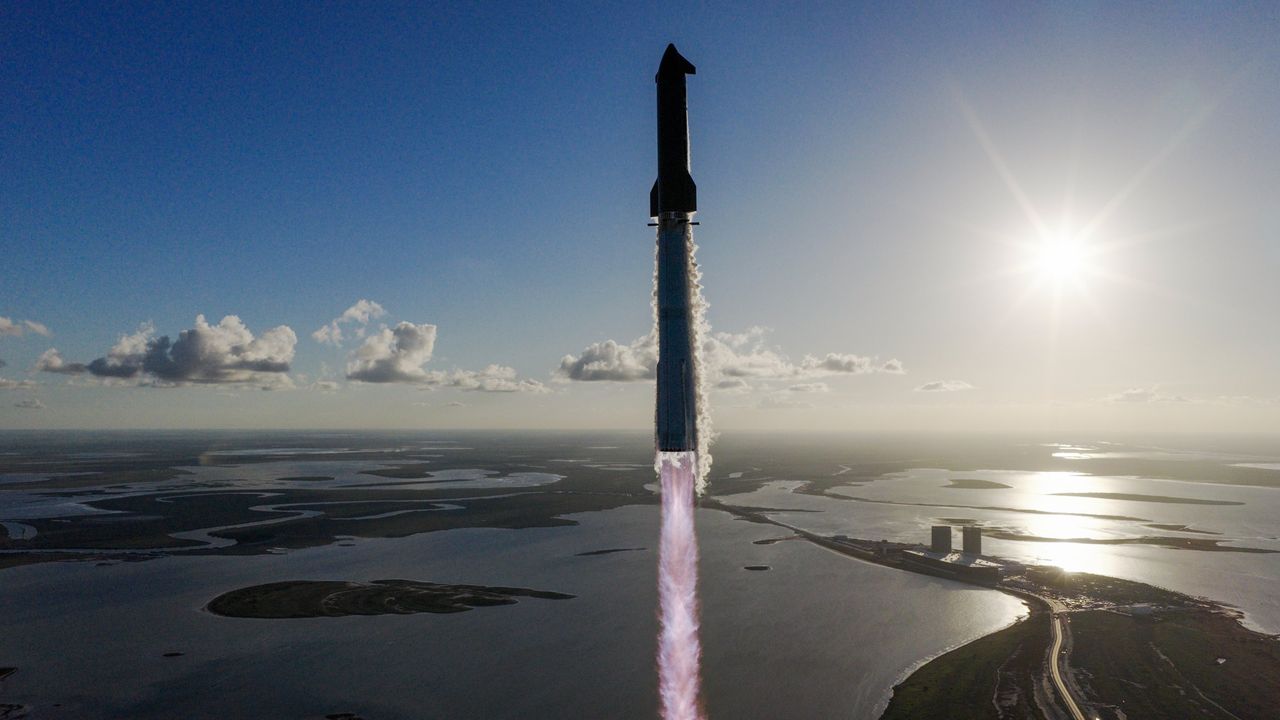SpaceX achieved a significant milestone on October 13, 2023, with the successful launch of the 11th test flight of its Starship rocket. This launch, conducted from the company’s Starbase facility in South Texas, demonstrated the capabilities of the world’s largest and most powerful rocket, which stands at an impressive 403 feet (124 meters).
The suborbital mission marked a pivotal moment for SpaceX as both components of the Starship system—the Super Heavy booster and the Starship upper stage—completed their reentry and achieved precise splashdowns back on Earth. The upper stage, referred to as “Ship,” successfully relit one of its engines while in space and deployed eight dummy payloads, underscoring the flight’s comprehensive success.
Transition to Starship Version 3
With this successful flight, attention now shifts to the next generation of the Starship program. SpaceX announced that it is actively building multiple vehicles in preparation for upcoming tests. The forthcoming Starship Version 3 is expected to introduce notable enhancements, including a height increase of approximately 5 feet (1.5 meters) over its predecessor.
Dan Huot, a SpaceX spokesperson, explained during the launch webcast that while the V3 model will resemble Version 2, significant upgrades will be made “under the hood.” The propulsion system will be revamped to utilize the new Raptor 3 engines, which promise increased performance for both the Super Heavy and Ship stages. The Super Heavy will feature 33 Raptor engines, while Ship will carry six.
Huot noted that the V3 model will incorporate advanced energy storage systems and numerous avionics improvements, which will facilitate longer-duration missions. A key feature of the new design will be external docking adapters, essential for in-space propellant transfer between Starships, a critical capability for deep space exploration.
In-space fuel transfer will allow Starship missions headed to destinations like the moon or Mars to launch with reduced propellant, thus conserving mass for cargo. The V3 Super Heavy will also include a redesigned fuel transfer tube, engineered to efficiently channel cryogenic liquid methane and oxygen to the Raptor engines.
Future Developments and Missions
Another significant upgrade for the V3 Super Heavy is the integration of a hot stage, which enables the Ship’s engines to ignite before complete separation from the booster. This model will also see a reduction in grid fins from four to three, although the new fins will be 50% larger and designed to serve both steering and vehicle lifting functions during recovery.
The Starship launch tower’s “chopstick” arms will be instrumental in handling both the Ship and Super Heavy, lifting them onto the launch mount and catching them post-launch. SpaceX has successfully executed three catches with Super Heavy but has yet to attempt this with the Ship.
The Orbital Launch Mount 1, where all 11 Starship test flights have taken place, will undergo renovations to accommodate the upgraded V3. Jake Berkowitz, a lead propulsion engineer at SpaceX, indicated that the upgrade will include a new orbital launch mount and enhanced flame trench systems. During this period, launches will temporarily shift to Pad 2, which is expected to be operational soon.
Looking ahead, Starship V3 aims to be capable of flying to Mars, with potential missions planned for next year. Elon Musk has expressed aspirations to deploy a fleet of uncrewed Starships to the Red Planet during the next launch window in late 2026, when Earth and Mars will be optimally aligned for interplanetary travel.
In the longer term, SpaceX envisions an even larger Starship iteration, designated V4, which will stand at a staggering 466 feet (142 meters) and feature 42 Raptor engines. This model is slated for introduction in 2027, a year that will also be significant for NASA as it plans to launch the Artemis 3 mission, marking humanity’s return to the moon with astronauts for the first time since the Apollo era. The lunar lander for this mission will utilize a Starship upper stage, further solidifying the vehicle’s role in future exploration endeavors.







































































